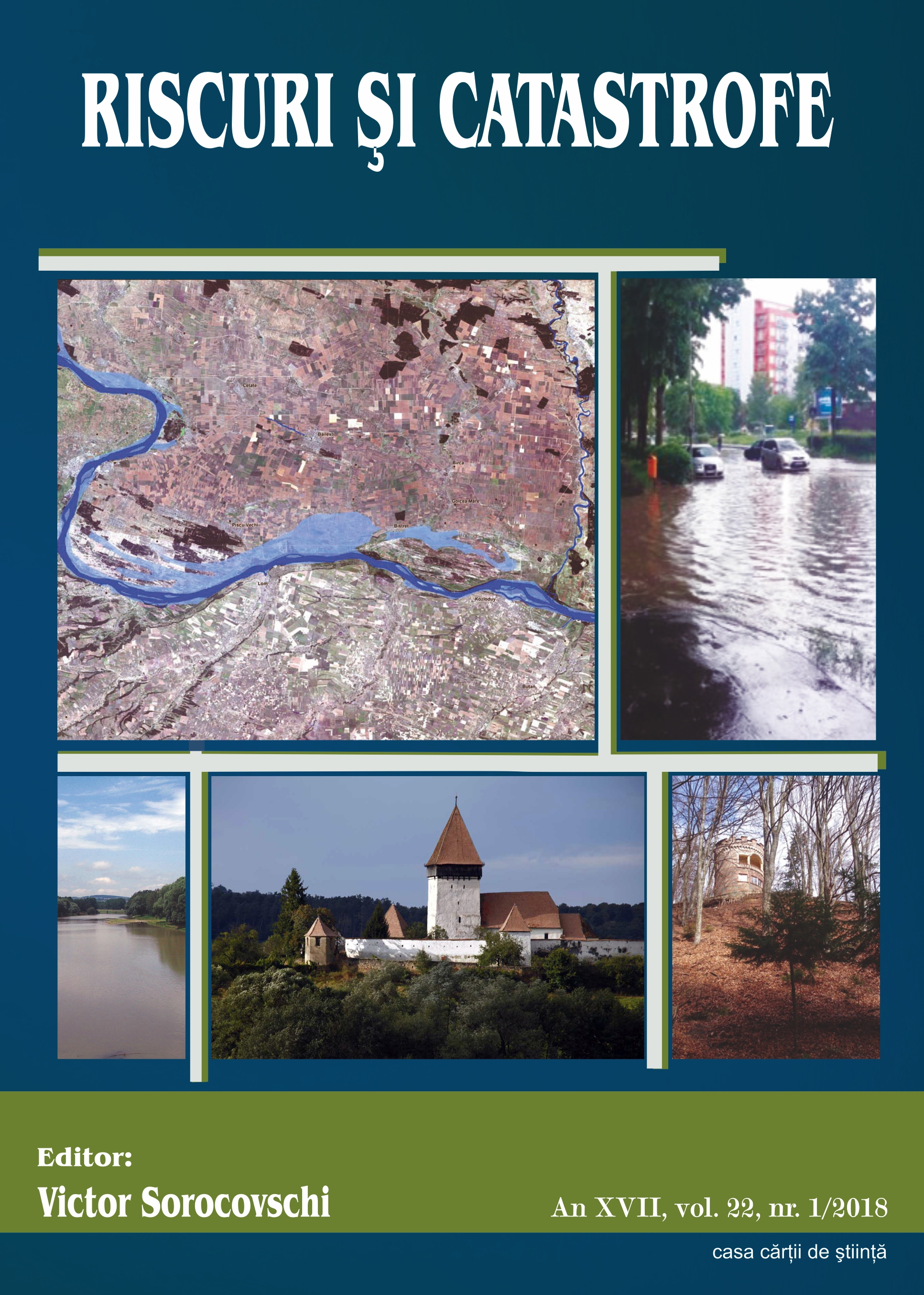Spatial analysis of landslides using GIS. Case study: Hârtibaciu Plateau.
Spatial analysis of landslides using GIS. Case study: Hârtibaciu Plateau.
Author(s): Gheorghe Roșian, Csaba Horváth, Gabriel Dobrei, Rozalia BenedekSubject(s): Geography, Regional studies, Environmental Geography
Published by: Editura Casa Cărții de Știință
Keywords: landslides; spatial statistics; distribution; GIS;
Summary/Abstract: From all the geomorphological processes, specific to Hârtibaciu Plateau, landslides stand out. The Hârtibaciu Plateau is placed geographically on the south-eastern part of the Transylvanian Basin (a large depression area placed in the interior of Carpathian Mountains). In order to analyse the distribution of the landslides we took into consideration 5 criteria: geology, altitude, slope, exposition and the administrative units. This type of study is necessary on one hand to find out the way in which the current landslides are distributed, on the other hand, the research will collect information on the susceptible areas which are prone to this type of geomorphological processes. Following the analysis of the ortophotoplans and topographic maps a number of 1771 landslides were vectorised. Considering the land use, landslides are found mainly on agricultural lands. Taking into consideration the lithologic conditions (the presence of friable rocks such as clays, marls, clay marls) and the land use (mostly agricultural lands), it is believed that in the future landslides will appear on similar slope, orientation and geological conditions etc. In this situation, knowing the susceptible areas to landslides is beneficial also for the territorial planning actions but also to avoid the settlement of buildings and other civil engineering constructions on lands which are prone to landslides.
Journal: REVISTA RISCURI SI CATASTROFE
- Issue Year: 22/2018
- Issue No: 1
- Page Range: 31-40
- Page Count: 10
- Language: English

